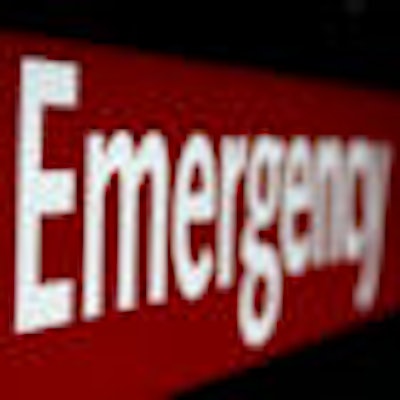
If one of your patients has a life-threatening allergic reaction while in your office, are you prepared?
Yes, it's rare that dental patients have an anaphylactic reaction or cardiac arrest during treatment. However, an astonishing 94% of out-of-hospital cardiac arrest victims die, according to Stanley Malamed, D.D.S., a diplomate of the American Dental Board of Anesthesiology and a leading authority on emergency medicine in the dental office.
Dr. Malamed lectured on the basic management of medical emergencies to a ballroom full of dentists during the recent ADA meeting in San Antonio. He discussed delayed-onset skin reactions that are nonlife-threatening, as well as anaphylactic reactions that can lead to death. Allergic reactions have "no rhyme or reason," he said, but we do understand how to treat the underlying mechanism.
"An allergic response is an overreaction by the body's immune system to a foreign substance," he reminded the audience. "It is not dose-related."
Dr. Malamed is the author of more than 120 scientific papers and two of the most popular textbooks in American dental schools, Handbook of Medical Emergencies in the Dental Office (6th edition, 2006, CV Mosby) and Handbook of Local Anesthesia (5th edition, 2004, CV Mosby).
His nearly four decades of practice and research have led to the development of a protocol for the basic management of all medical emergencies that he calls "P-A-B-C-D." The protocol varies slightly depending on the severity of the reaction, the rapidity of onset, and the rapidity of progression from a skin reaction to cardiovascular problems.
Nonlife-threatening allergic reactions
These reactions have a delayed onset of greater than 60 minutes and are limited to the skin. The protocol for these reactions is:
- P - Positioning: Any position that makes the patient feel comfortable is fine. Then, assess ...
- A - Airway
- B - Breathing
- C - Circulation
- D - Diphenhydramine (Benadryl): 50 mg IM (must be IM, not oral), keep patient in the office for at least 1 hour; if patient improves, give a prescription for Benadryl. Adults: 50 mg q.i.d. for 3 days. Children: 25 mg q.i.d. for 3 days.
The prescription is recommended because histamine blockers such as Benadryl will stop the itching quickly, but the rash may last 72 hours because the chemicals are in the skin, Dr. Malamed explained.
Life-threatening anaphylactic reactions
These reactions have a rapid onset, within minutes. The protocol for these reactions is:
- P - Positioning: The objective is blood flow to the brain, but the position is based on the patient's primary complaint. If he or she can't breathe, let the patient sit upright. If feeling faint, the patient should be placed in a supine position with feet elevated.
- A - Airway: Head-tilt, chin-lift, if necessary.
- B - Breathing: Assess and ventilate with oxygen, if necessary.
- C - Check the carotid pulse if the patient is unconscious. Have staff call 911 immediately!
- D - Definitive management: Administer 0.3 mg of 1:1000 epinephrine IM only (adult dose). NEVER give epi IV. Continue giving the same dose q5minutes until recovery or help arrives.
Epinephrine is available in autoinjector syringes of 0.3 mg for adults and 0.15 mg for children less than 66 lb. It should be administered in the vastus lateralis (outer thigh). Epi lasts about 10 minutes, so the medical emergency kit should include several syringes of it because multiple doses are usually required. Give oxygen and basic life support, as needed. Record the patient's vital signs periodically.
Dr. Malamed emphasized that epinephrine and oxygen are the most important therapeutic agents to administer during anaphylaxis. Allergists and immunologists concur that epinephrine is the drug of choice. It elevates the blood pressure and relieves bronchospasm. In a supplement issue of the Journal of Allergy and Clinical Immunology on diagnosing and managing anaphylaxis, the participating physicians concluded that there is no contraindication to administrating epinephrine in anaphylaxis (March 2005, Vol. 115:3, pp. S483-523).
"When there's doubt, use epinephrine, because if the patient doesn't get it and they need it, they will die," he warned his audience while showing a very realistic video of a ridiculously calm dentist with a patient seemingly near death's waiting room.
For anaphylaxis, Dr. Malamed recommends giving epi first to reverse the pathologic process. When the patient begins to improve, give 50 mg of diphenhydramine HCL to "prevent the progression of the allergic reaction," he suggested.
To prevent that allergic reaction from progressing to a terrible tragedy, be prepared with annual basic life support training for every staff member, emergency drugs that are not expired, and life support equipment that functions properly, he added.



















